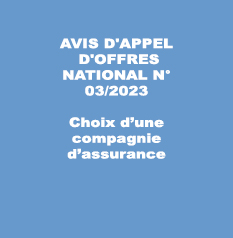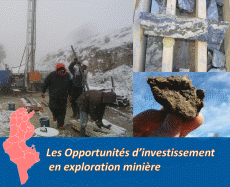| Programme annuel & rapport de suivi technique |
-

Rapport d'activités 2023
-

Programmes Techniques 2024
|
| Géocatalogue |

|
| Appels d'Offres |
-

ACQUISITION DES TICKETS RESTAURANT POUR LE PERSONNEL DE L’ONM
-

CHOIX D’UNE COMPAGNIE D’ASSURANCE
-

ACQUISITION ET MISE EN ŒUVRE D’UN PROGICIEL DE GESTION INTEGRE
|
|
Investir en Tunisie |


|
|
|
|
|
::
Documentation and Editions
>>
Research library
|
| |
|
[
Search by author
]
[
Search keyword
]
[
Search by index
]
[
Search by category
]
|
title of the reference :
|
A comparative study of the Rare Earth Element (REE) distributions within the Lower Cretaceous dolomites and limestones of Central Tunisia.
|
|
Publication Date:
|
1985
|
|
Author :
|
Tlig Said, M'rabet Ali
|
|
Catalogue type :
|
Livre
|
|
Catalogue reference :
|
Vol.32 (NLD) Sedimentology Vol.32 A comparative study of the Rare Earth Element (REE) distributions within the Lower Cretaceous dolomites and limestones of Central Tunisia. Etude comparative de la répartition des terres rares dans les dolomies et les calcaires du Crétacé inférieur de la Tunisie centrale. REE distribution, strontuim content and oxygen isotopic composition have been studied in the Lower Cretaceous dolomites and their interbedded and/or parental limestones of Central Tunisia. Dolomites, as indicated by previous sedimentologie, geochemical and isotopic study, are different in origin. Environments of dolomite formation include : evaporitic sabkha, deep phreatic, karst and lacustrine. With the exception of sabkha environment, dolomitizing fluids presumably have been essentially meteoric. The comparison between REE distributions in dolomites and limestones clearly suggests that the general shapes of the REE patterns are preserved during dolomitization. Nevertheless, the total REE amounts are somewhat lowered in dolomites comparatively to parental limestones. Moreover, within the dolomites, the total contents are positively correlated to the Sr and ?18O contents: thus indicating that the decrease in REE, Sr, and ?18O contents is related to a decrease in the salinity of dolomitizing fluids. In addition, dolomites associated with emergence surfaces (karst)are the most improverished in REE. Furthermore, they ar relatively enriched in light REE, indicating a more or less important fractionation with the REE distributions. This enrichment has been related to the influence of the inorganic complexes which favours the greatest solubility of the heavy REE in basic solution with respect to the lightest members of the REE group. Comm. présentée à Mezhdunarodnyj geologicheskij Kongress : Moskva (SUN), Moscow : Nauka, 1984.- Vol.5.- p.418 terre rare ; analyse elément trace ; strontium ; isotope ; isotope stable ; O18 O16 ; dolomie ; calcaire ; Sr ; O ; teneur ; dolomitisation ; salinité ; sebkha ; milieu lacustre ; Crétacé inférieur ; formation Meloussi ; formation Bouhedma ; formation Orbata ; formation Serj ; formation Kébar ; Tunisie ; Tunisie Centrale ; J. Kébar ; J. el Hamma ; J. Chaambi ; J. Touila ; J. Sidi Aïch M'rabet Ali Tlig Said Géochimie
|
|
Indexation decimale :
|
Géochimie
|
|
Keywords :
|
terre rare ; analyse elément trace ; strontium ; isotope ; isotope stable ; O18 O16 ; dolomie ; calcaire ; Sr ; O ; teneur ; dolomitisation ; salinité ; sebkha ; milieu lacustre ; Crétacé inférieur ; formation Meloussi ; formation Bouhedma ; formation Orbata ; formation Serj ; formation Kébar ; Tunisie ; Tunisie Centrale ; J. Kébar ; J. el Hamma ; J. Chaambi ; J. Touila ; J. Sidi Aïch
|
|
Summary :
|
REE distribution, strontuim content and oxygen isotopic composition have been studied in the Lower Cretaceous dolomites and their interbedded and/or parental limestones of Central Tunisia. Dolomites, as indicated by previous sedimentologie, geochemical and isotopic study, are different in origin. Environments of dolomite formation include : evaporitic sabkha, deep phreatic, karst and lacustrine. With the exception of sabkha environment, dolomitizing fluids presumably have been essentially meteoric. The comparison between REE distributions in dolomites and limestones clearly suggests that the general shapes of the REE patterns are preserved during dolomitization. Nevertheless, the total REE amounts are somewhat lowered in dolomites comparatively to parental limestones. Moreover, within the dolomites, the total contents are positively correlated to the Sr and ?18O contents: thus indicating that the decrease in REE, Sr, and ?18O contents is related to a decrease in the salinity of dolomitizing fluids. In addition, dolomites associated with emergence surfaces (karst)are the most improverished in REE. Furthermore, they ar relatively enriched in light REE, indicating a more or less important fractionation with the REE distributions. This enrichment has been related to the influence of the inorganic complexes which favours the greatest solubility of the heavy REE in basic solution with respect to the lightest members of the REE group.
|
|
Exemplaries :
|
TU1236B, TU1236A
|
|
|
|
|
|
|
|



